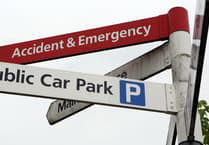The recently created Bovey Heathfield Local Nature Reserve took another step along the long path to recovery last week when work started to repair worn and lost areas of heather.
Devon Wildlife Trust's Stephen Carroll, who is the community officer for the reserve, was on hand to oversee the project which involved the mechanical lifting of heather from a development on a nearby industrial estate and its re-siting in the reserve.
Large patches of vegetation have been lost in the fragile 62-acre environment due to the past activities of off-roaders and general abuse such as fly tipping.
Mr Carroll and his team of volunteers began the clean up operation at the reserve – designated a site of special scientific interest – in March, and so far in excess of 32 tonnes of rubbish and 50 cars have been removed.
Gates have now been installed to prevent unauthorised vehicular access.
A handful of motorcyclists have still been found to be using the reserve but Mr Carroll reports that following discussions with them an understanding has been reached and he praised their cooperation.
Since gaining its local nature reserve status the site has already enjoyed an improved wildlife presence with the first sightings of nightjars for decades.
Also spotted have been rare Dartford warblers and hobbies. The dry, settled weather has also seen a good number of moths and butterflies on the heath such as the specialist grayling which only thrives in such habitats.
From the end of September a full action programme of conservation works begins which includes projects such as pond creation and establishing nest sites and lizard basking patches.
Mr Carroll is delighted with the progress so far and said that within just five years an appreciable difference will have been made to the reserve.
He is also looking to build long-term relationships with the local community and schools, all of whom can help with the regeneration programme which is being funded largely by English Nature with a £55,000 grant over three years.
'This is a real chance to help reinstate a lost habitat and anyone can get involved,' said Mr Carroll.
'We're not looking for any special skills or tools just plenty of enthusiasm and stout footwear.
'Britain has lost nearly 95 per cent of its lowland heathland in the last 50 years, and Devon itself has lost around 70 per cent. We're probably the last generation who can stop the rot.'
The only other examples of lowland heath remaining in Devon are the Aylesbeare pebble beds in East Devon and Woodbury Common near Exeter.
If you would like more information or want details of how to become involved in the regeneration project you can contact Stephen Carroll on 01392 279244 or email him on scarroll@devon wt.cix.co.uk.


